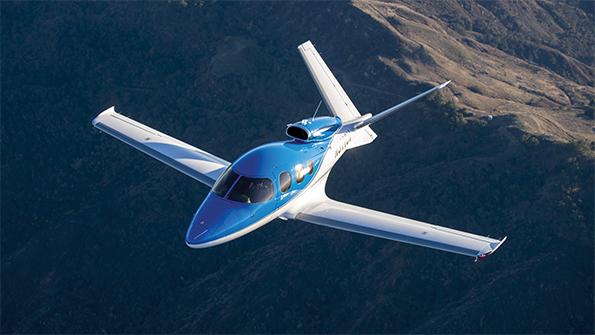
Its promise of being the “lowest, slowest” jet was unorthodox. Its reliance on a single engine and single pilot seemed dubious. And the fact that its manufacturer had never produced an aircraft with retractable gear, let alone a pressurized one with turbofan power, made the whole enterprise a reach. Finally, the project’s launch year—2006—could hardly have been worse, with the Great Recession about to choke the roaring economy to a whimper.
Fast-forward 14 years, and Cirrus Aircraft has proved to be as prescient as it was persistent since its SF50 Vision Jet—the world’s first “personal jet”—has become as popular as it is unique. And that singularity very much includes pricing: Its $2.85 million sticker (typically equipped, type rating included) is roughly $1.5 million less than the least expensive light jet, and even well below most pressurized, single-engine turboprops.
The journey to this happy place was not without setbacks. Foremost among those was the aforementioned recession that essentially slowed aircraft development to a crawl and ultimately resulted in the company changing hands.
In 2011, a subsidiary of the Aviation Industry Corp. of China (Avic) offered $210 million for the Duluth, Minnesota, manufacturer. Cirrus’ then-Bahrainian owners readily accepted the deal, and Avic soon announced plans to revitalize the jet project.
Although there had been excitement in the early 2000s about the very light jet segment coming of age, the promise of the Sport Jet, ProJet, AdamJet, Safire Jet, D-Jet, PiperJet, among others, essentially went poof! The Eclipse 500 did earn its certification and entered into production, but after a series of financial reversals, by 2018, it was done.
Meanwhile, the Chinese invested heavily in the Vision Jet’s development and flight testing. In October 2016, the aircraft was awarded a Federal Aviation Regulation Part 23 Type Certificate. Cirrus delivered its first customer jet two months later. Since then, it has delivered another 200 and expects to produce 80 this year, essentially matching 2019 output despite being slowed by the coronavirus pandemic. By unit count, the SF50 is the most popular private jet in production today. And there are another 400 of them in the orderbook.
What’s the appeal? Price, obviously, but the draw goes well beyond that. When Cirrus began the project, its target buyers were owners of its popular SR series of single-engine piston aircraft. Accordingly, its designers took cues from those aircraft to ease the transition. So, like its piston siblings, the SF50 has composite construction, sidestick controls, excellent visibility and a five-screen Garmin avionics flight deck. Although similar to a Beechcraft Baron in length and wingspan, the SF50’s 5.1-ft.-wide, 4-ft.-high, air-conditioned, flat-floor, USB-ported, LED-lit cabin can comfortably accommodate five passengers.
The aircraft is propelled by a Williams International FJ33-5 turbofan rated at 1,846 lb. of thrust and fitted with a full authority digital engine control. It provides a top cruise speed of just over 300 KTAS (345 mph). With seats full, the aircraft can fly 461 nm, with reserves, and can cover 1,171 nm with maximum fuel.
One of the manufacturer’s signature moves from the outset was to equip its aircraft with an emergency parachute. And the SF50 is no exception; the Cirrus Aircraft Parachute System comes standard. None has been activated on an SF50.
Another Cirrus trait is to regularly make product improvements. So just 15 months after SF50 production began, the company introduced the G2 Vision Jet. This second-generation version has increased cruise altitude by 3,000 ft., to 31,000 ft., provides a quieter cabin, more powerful avionics, a radio altimeter and an autothrottle. The digital equipage is key to another new feature: “Safe Return,” the autonomous landing system created by Garmin that in an emergency anyone onboard can activate with the push of a button. That system is expected to be certified in the aircraft later this year.
As intended, a significant majority of SF50 buyers are moving up from Cirrus piston models. But among the owners of the 200 SF50s already on the market are several charter operators as well as businesses. Hoping to increase its share, Cirrus has launched “Smart Lift,” a website tutorial intended to educate and encourage business aviation flight departments to supplement their fleets with a Vision Jet as a low-cost, responsive regional people mover.
In an Operators Survey published in the January 2020 issue of Business & Commercial Aviation, owners gave the aircraft high marks for its comfort, excellent visibility, reliability, handling ease, advanced avionics, safety features and Cirrus product support.
Turns out that low, slow, inexpensive and reliable make for a winning combination.





